ARE SANITIZER AND PURIFYER THE AIR NOT THE SAME THING?
Heading
SANITIZE
Sanitizing means eliminating harmful microorganisms such as bacteria, viruses and mold.
UV LAMPS
They destroy the DNA of bacteria and viruses, preventing their reproduction.
Also used in hospitals to maintain a sterile environment.
OZONE
attacks and destroys the cellular structure of microorganisms through oxidation.
It is one of the most powerful natural disinfectants, also used in industrial environments.
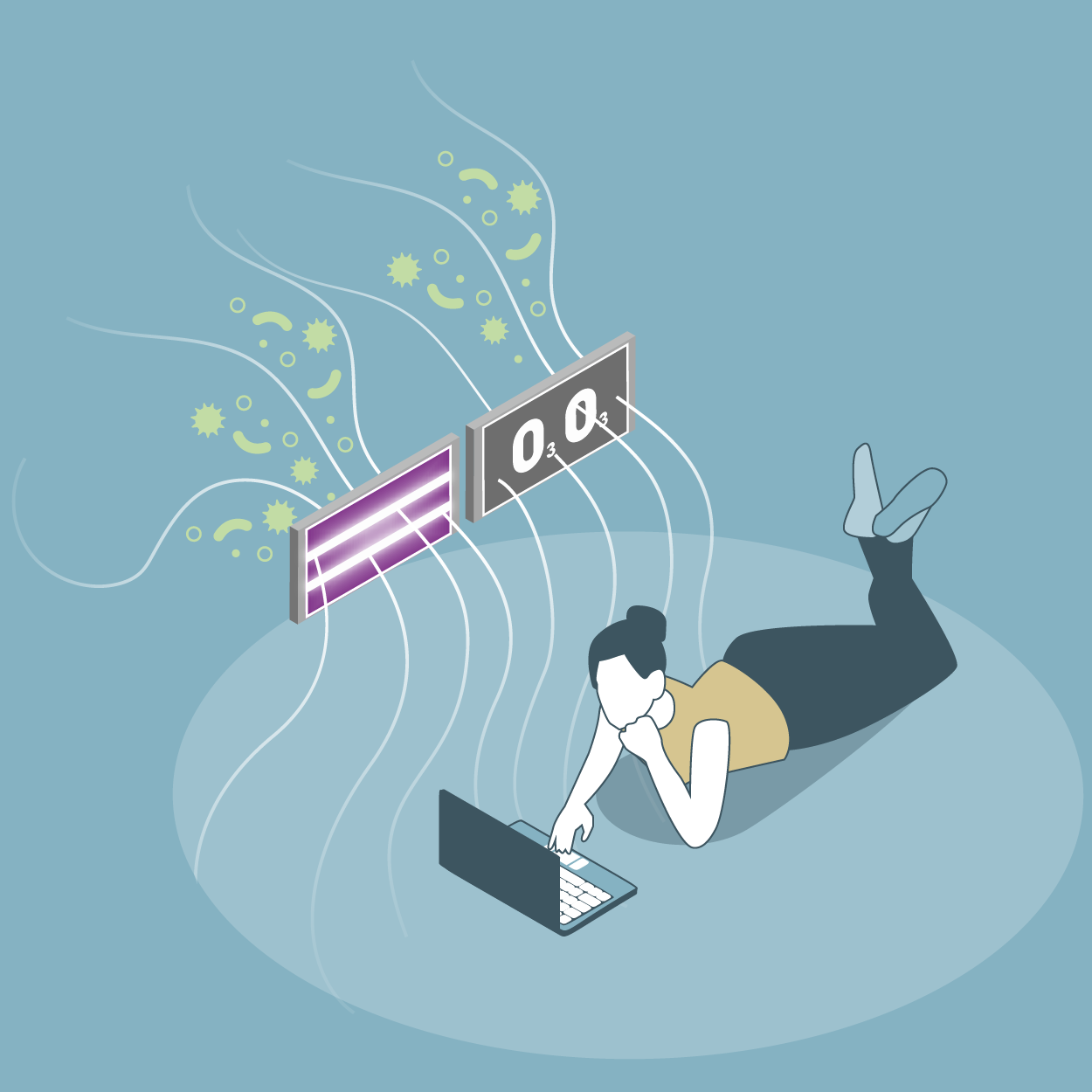
Heading
SANITIZE
Sanitizing means eliminating harmful microorganisms such as bacteria, viruses and mold.
UV LAMPS
They destroy the DNA of bacteria and viruses, preventing their reproduction.
Also used in hospitals to maintain a sterile environment.
OZONE
attacks and destroys the cellular structure of microorganisms through oxidation.
It is one of the most powerful natural disinfectants, also used in industrial environments.

Heading
PURIFY
Purifying removes particles such as dust, pollen and fumes from the air, but does not eliminate microorganisms.
HEPA FILTERS
capture tiny particles, such as pollen and dust,
but they do not eliminate bacteria or viruses.
Heading
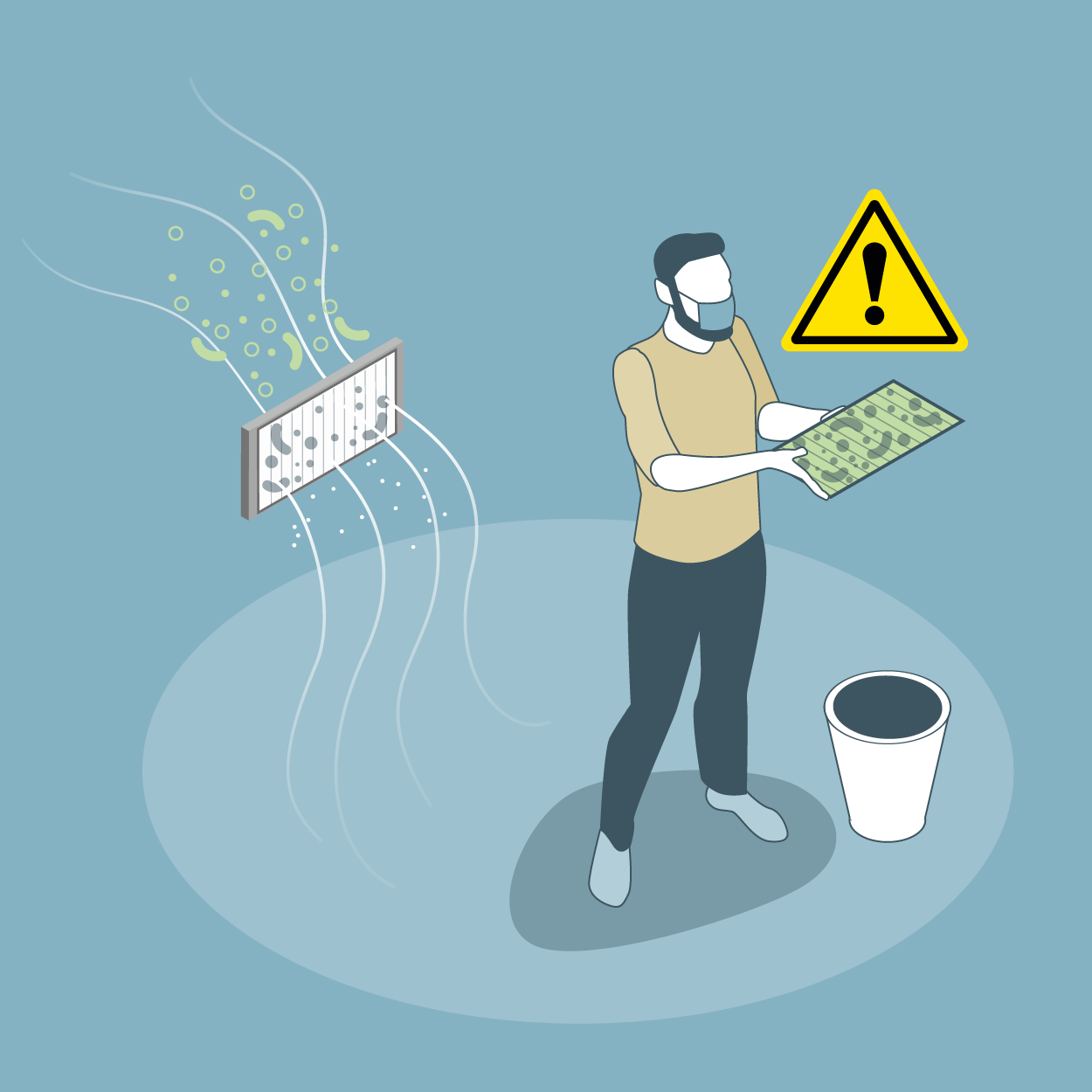
Heading
PURIFY
Purifying removes particles such as dust, pollen and fumes from the air, but does not eliminate microorganisms.
HEPA FILTERS
capture tiny particles, such as pollen and dust,
but they do not eliminate bacteria or viruses.
Heading

ARE THERE VARIOUS WAYS TO TREAT AIR? HERE'S HOW THEY WORK!
When it comes to improving air quality, there are several methods
that eliminate contaminants and microorganisms.
Discover the differences between UVC, negative ions and HEPA filters!
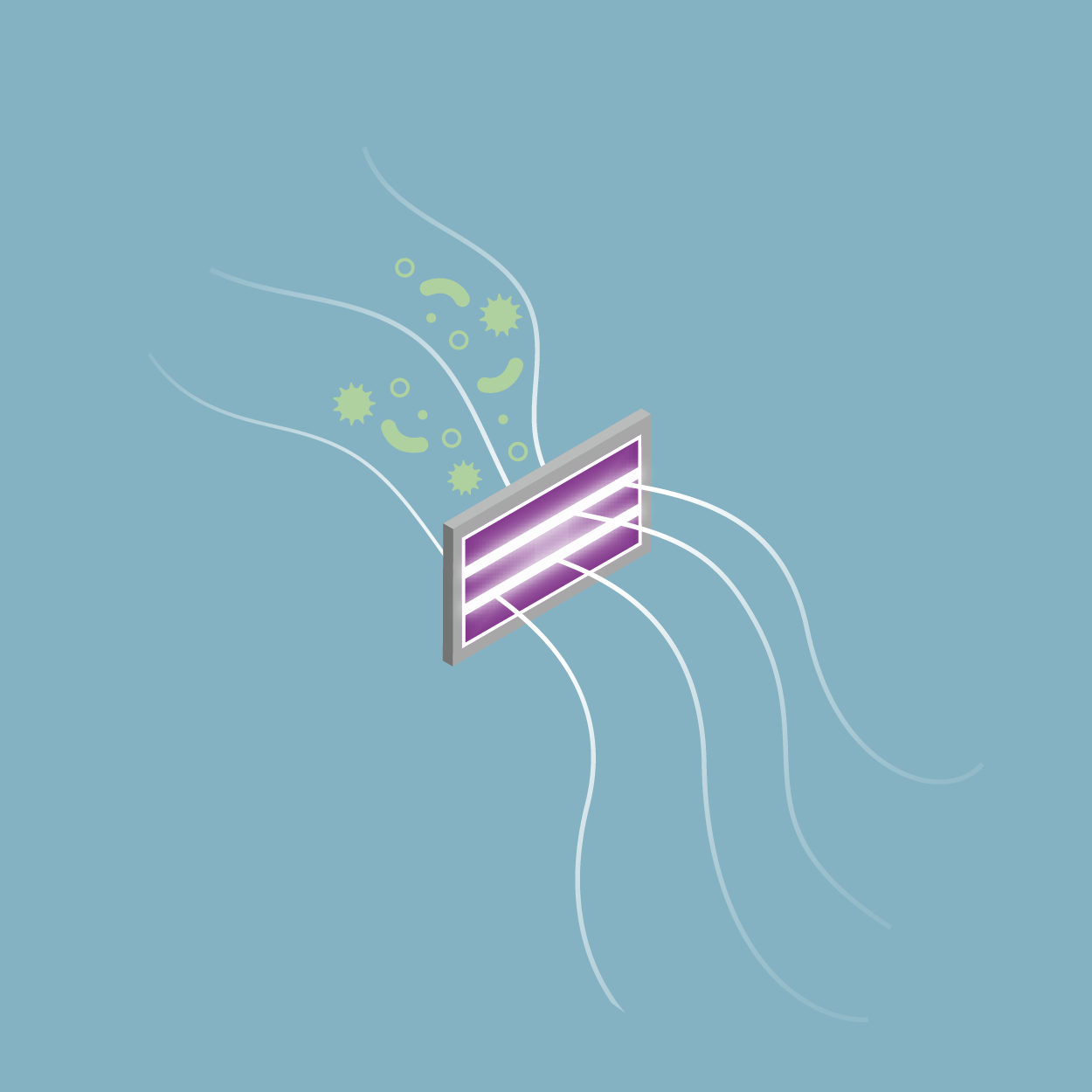
UVCSHORTWAVE ULTRAVIOLET LIGHT
UVC technology uses ultraviolet light waves to eliminate viruses and bacteria by damaging their DNA and preventing them from reproducing.
It is particularly effective against microorganisms present in the air, but does not act on solid particles such as dust or pollen.
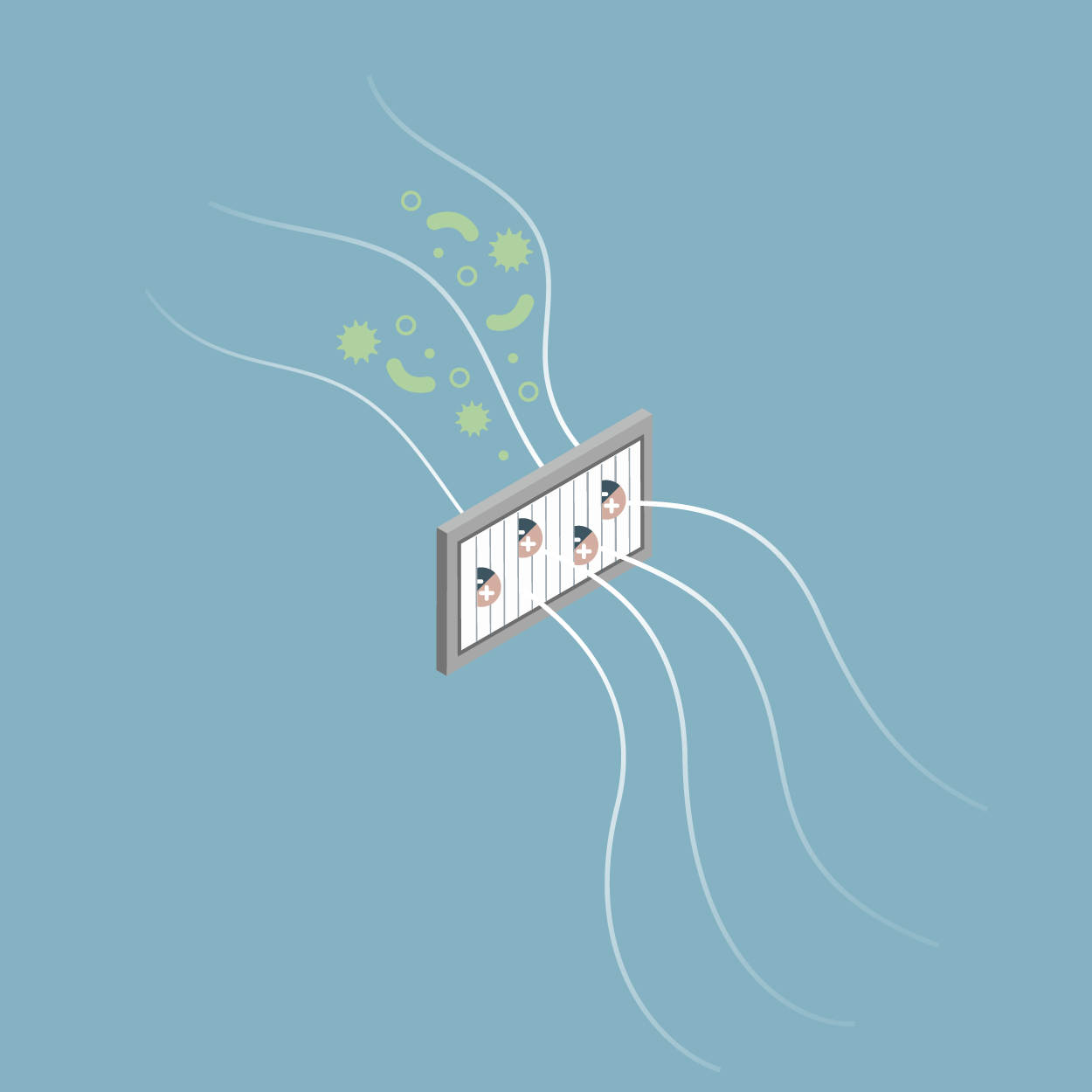
NEGATIVE IONS
Negative ions bind to particles in the air, causing them to fall to the ground. They also generate small amounts of ozone that help kill microorganisms.
Negative ions are naturally found in thunderstorms or near waterfalls.
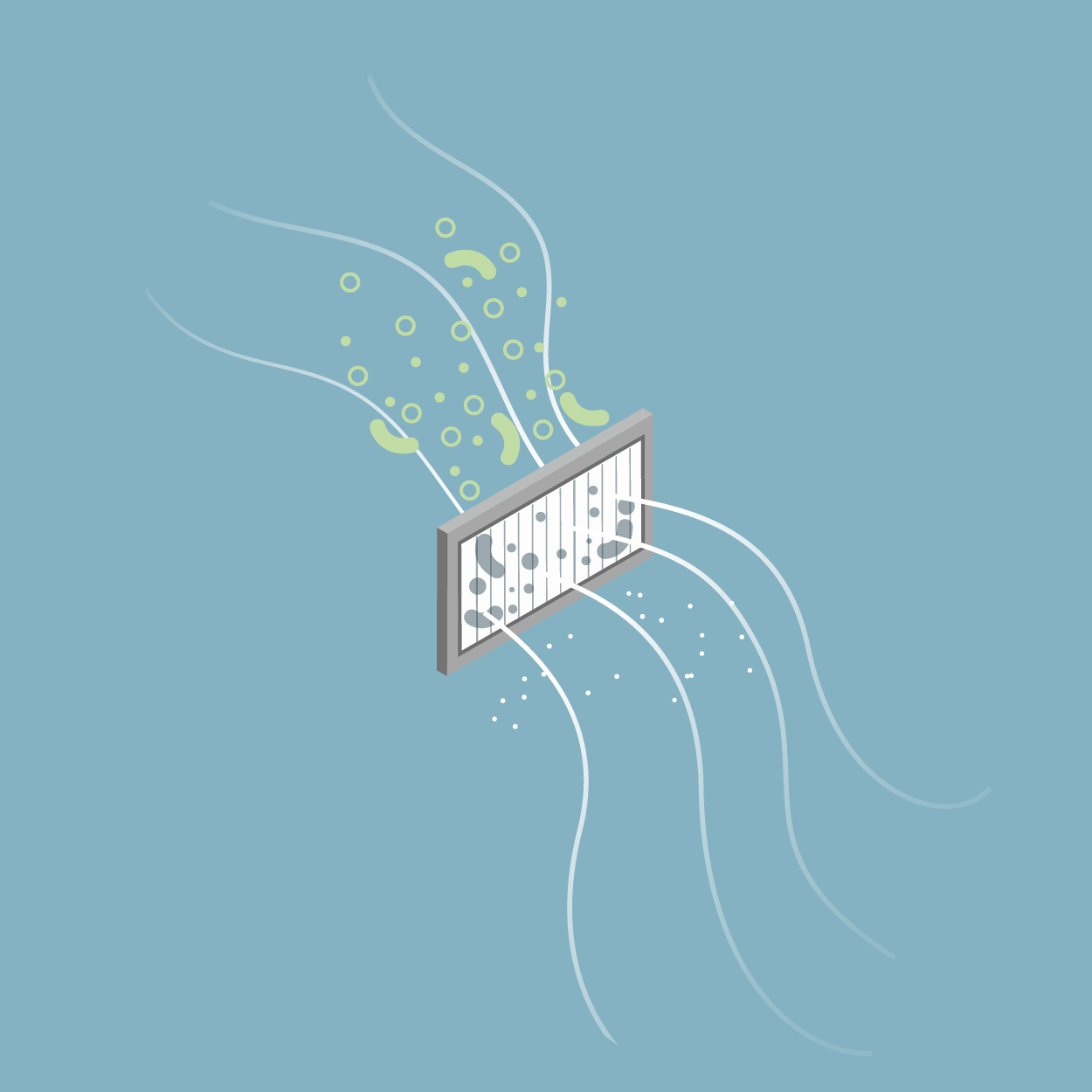
HEPA FILTERS
HEPA filters capture dust, pollen, bacteria and viruses depending on their size, but do not destroy them. If not replaced regularly, they can become a container of
potentially harmful particles.
DO HEPA FILTERS HAVE PROS AND CONS?
SUSTAINABILITY AND COSTS
DO HEPA FILTERS HAVE PROS AND CONS?
SUSTAINABILITY AND COSTS
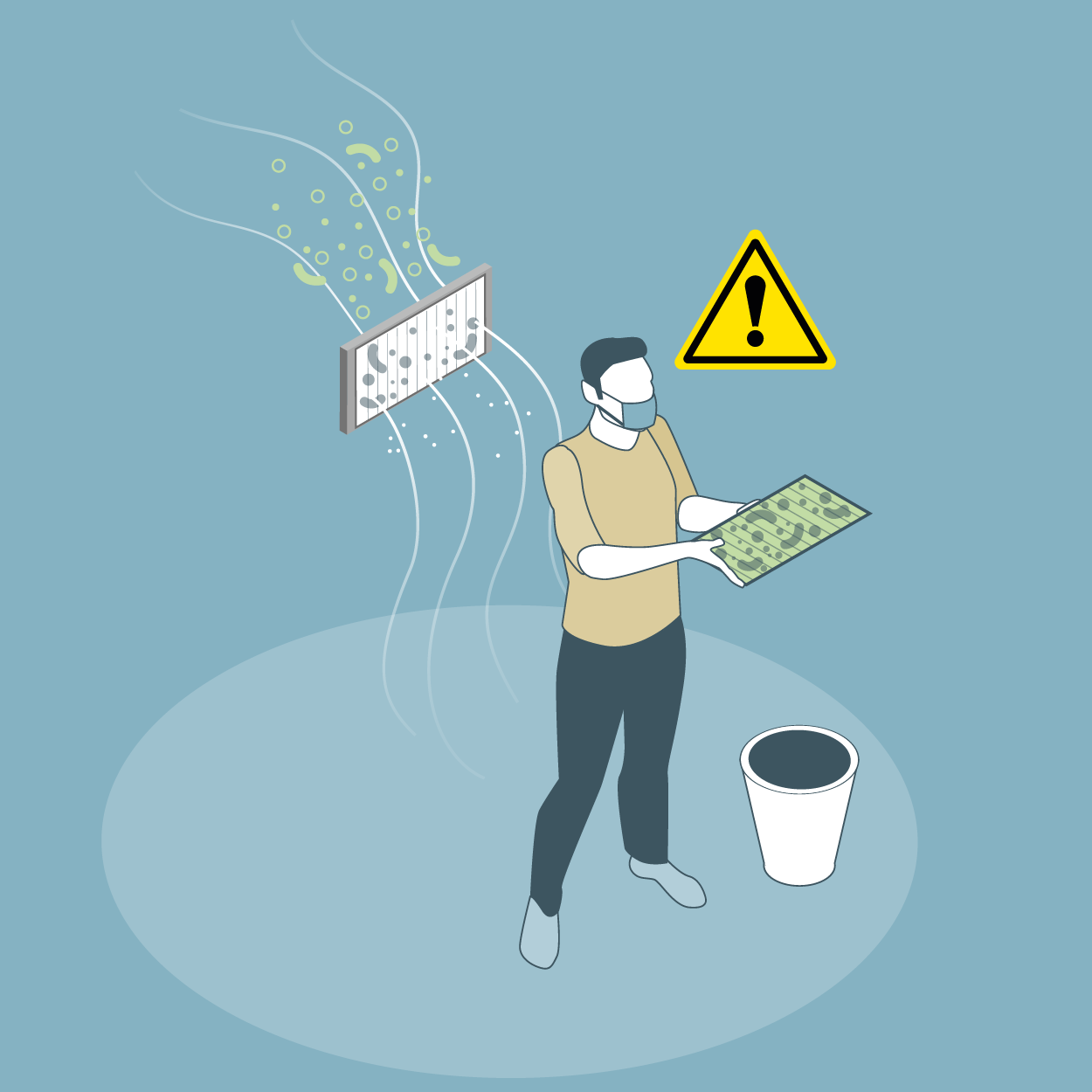
WHAT DO HEPA FILTERS DO?
PARTICLE RETENTION
They capture dust, pollen, bacteria and viruses, but do not eliminate them.
EFFECTIVENESS
They block particles based on their size, but do not destroy microorganisms.
ARE THERE ANY RISKS?
SUSTAINABILITY AND COSTS
SUSTAINABILITY
Frequent replacement generates
waste that impacts the environment.
COSTS
Regular maintenance costs extra. HEPA filters must be replaced every 6 months to remain effective.
ARE THERE ANY RISKS?
ARE THERE ANY RISKS?
POTENTIAL RISK
If not replaced regularly, they can release trapped particles, worsening air quality. A full HEPA filter can actually worsen air quality.

WHAT DO HEPA FILTERS DO?
PARTICLE RETENTION
They capture dust, pollen, bacteria and viruses, but do not eliminate them.
EFFECTIVENESS
They block particles based on their size, but do not destroy microorganisms.
ARE THERE ANY RISKS?
SUSTAINABILITY AND COSTS
SUSTAINABILITY
Frequent replacement generates
waste that impacts the environment.
COSTS
Regular maintenance costs extra. HEPA filters must be replaced every 6 months to remain effective.
ARE THERE ANY RISKS?
ARE THERE ANY RISKS?
POTENTIAL RISK
If not replaced regularly, they can release trapped particles, worsening air quality. A full HEPA filter can actually worsen air quality.
CAN OZONE BE DANGEROUS ONLY AT CERTAIN CONCENTRATIONS?
Heading
CAN OZONE BE DANGEROUS ONLY AT CERTAIN CONCENTRATIONS?
Heading
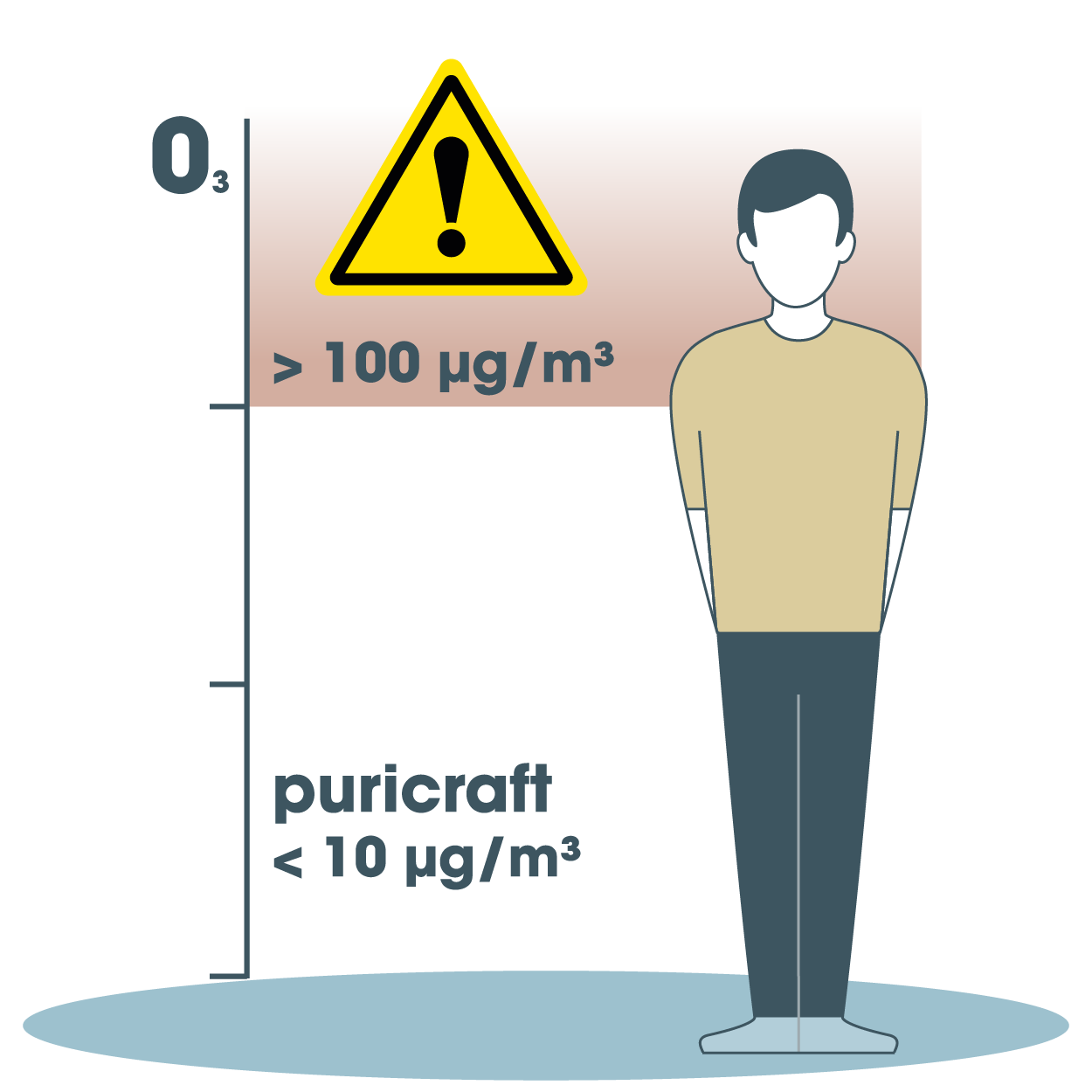
DANGER OF OZONE
Ozone is effective in sanitizing air and surfaces, but it can be
dangerous in high concentrations, irritating the respiratory tract.
WHEN IS IT DANGEROUS?
If it exceeds a certain threshold, it can cause health problems.
HOME DEVICES?
Puricraft devices emit very low and safe amounts of ozone, effective against bacteria and viruses, without risk to people. Ozone in low concentrations is so safe that it is also used to treat drinking water.

DANGER OF OZONE
Ozone is effective in sanitizing air and surfaces, but it can be
dangerous in high concentrations, irritating the respiratory tract.
WHEN IS IT DANGEROUS?
If it exceeds a certain threshold, it can cause health problems.
HOME DEVICES?
Puricraft devices emit very low and safe amounts of ozone, effective against bacteria and viruses, without risk to people. Ozone in low concentrations is so safe that it is also used to treat drinking water.
ARE THERE TWO TYPES OF IONIZATION TO SANITIZE THE AIR?
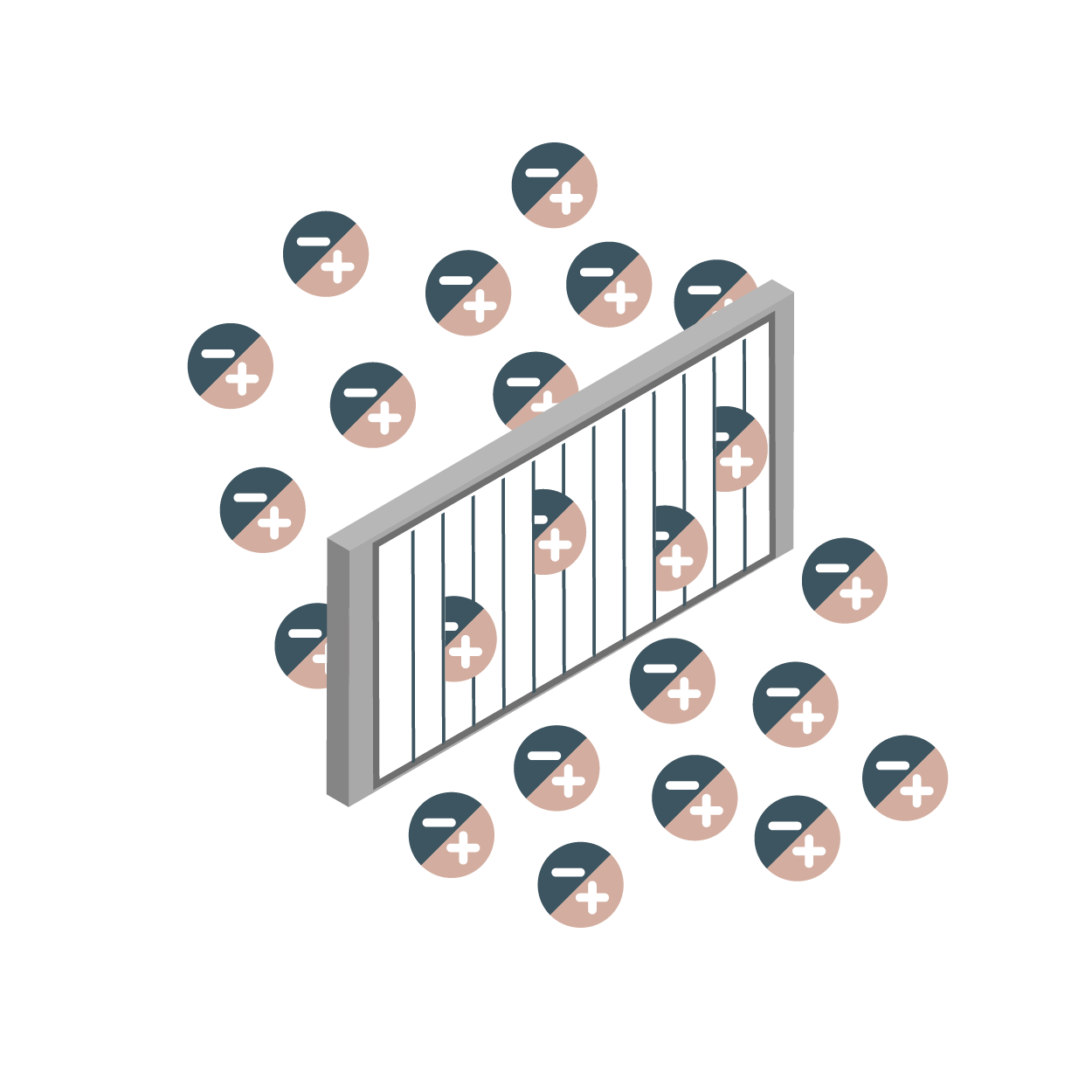
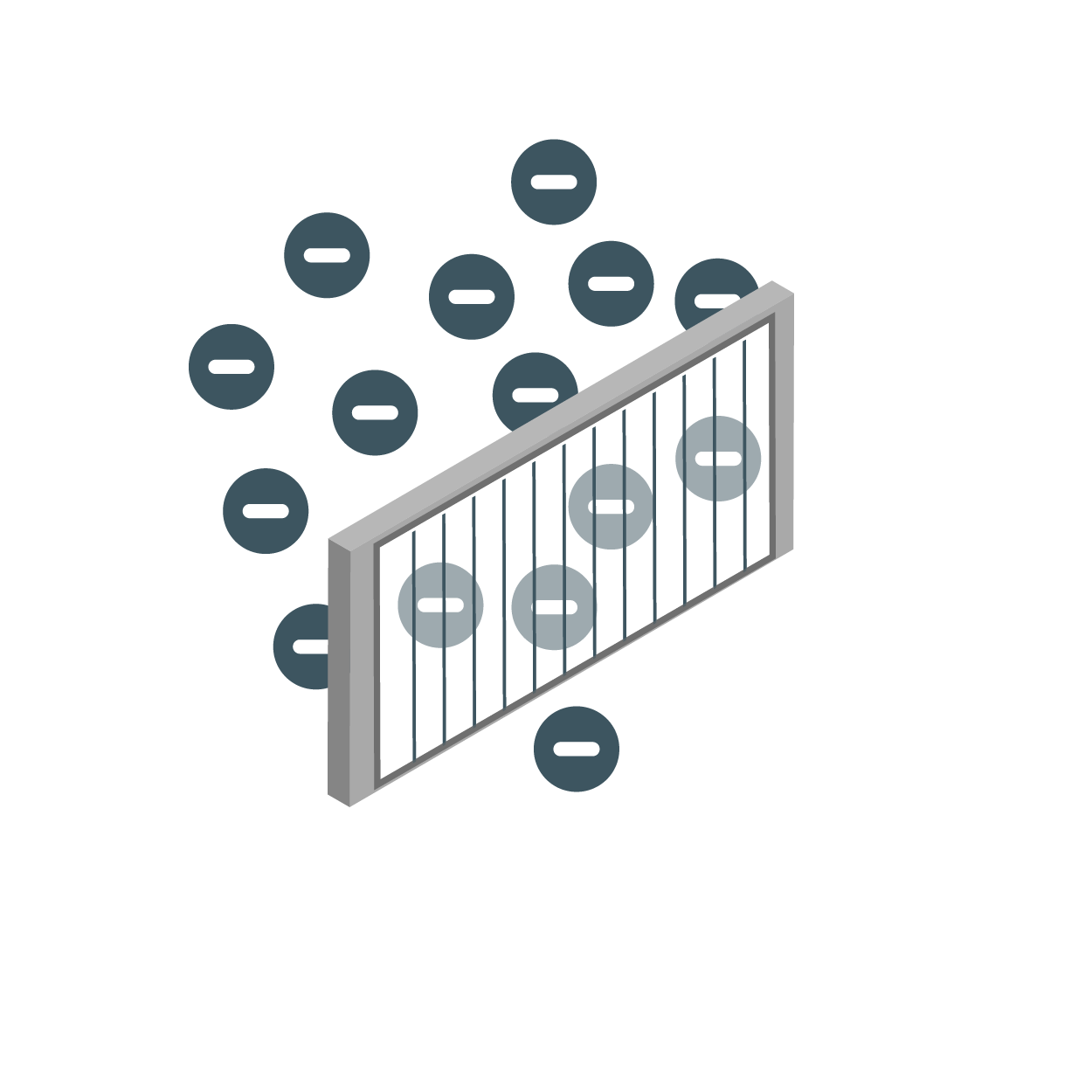
IONIZER
MONO-POLAR
This traditional technology uses only one
negative pole to generate ions, but the grid
accumulates charges that limit effectiveness,
reducing the ability to purify the air.
IONIZER
BI-POLAR PURICRAFT
Puricraft's bi-polar technology uses two poles (positive and negative), generating a cold plasma flow that overcomes charge barriers, making air purification much more efficient. Eliminates more polluting particles in less time than traditional ionizers.
ARE THE SMALLEST PARTICLES THE MOST DANGEROUS TO YOUR HEALTH?
Airborne particles, such as PM10, PM2.5 and PM1.0, can have different health effects depending on their size:
PM10 : Particles up to 10 microns, visible to the naked eye, such as dust.
PM2.5 : Smaller (up to 2.5 microns), they can penetrate deep into the lungs.
PM1.0 : The smallest (up to 1.0 microns), can enter the blood and represent the greatest health risk.
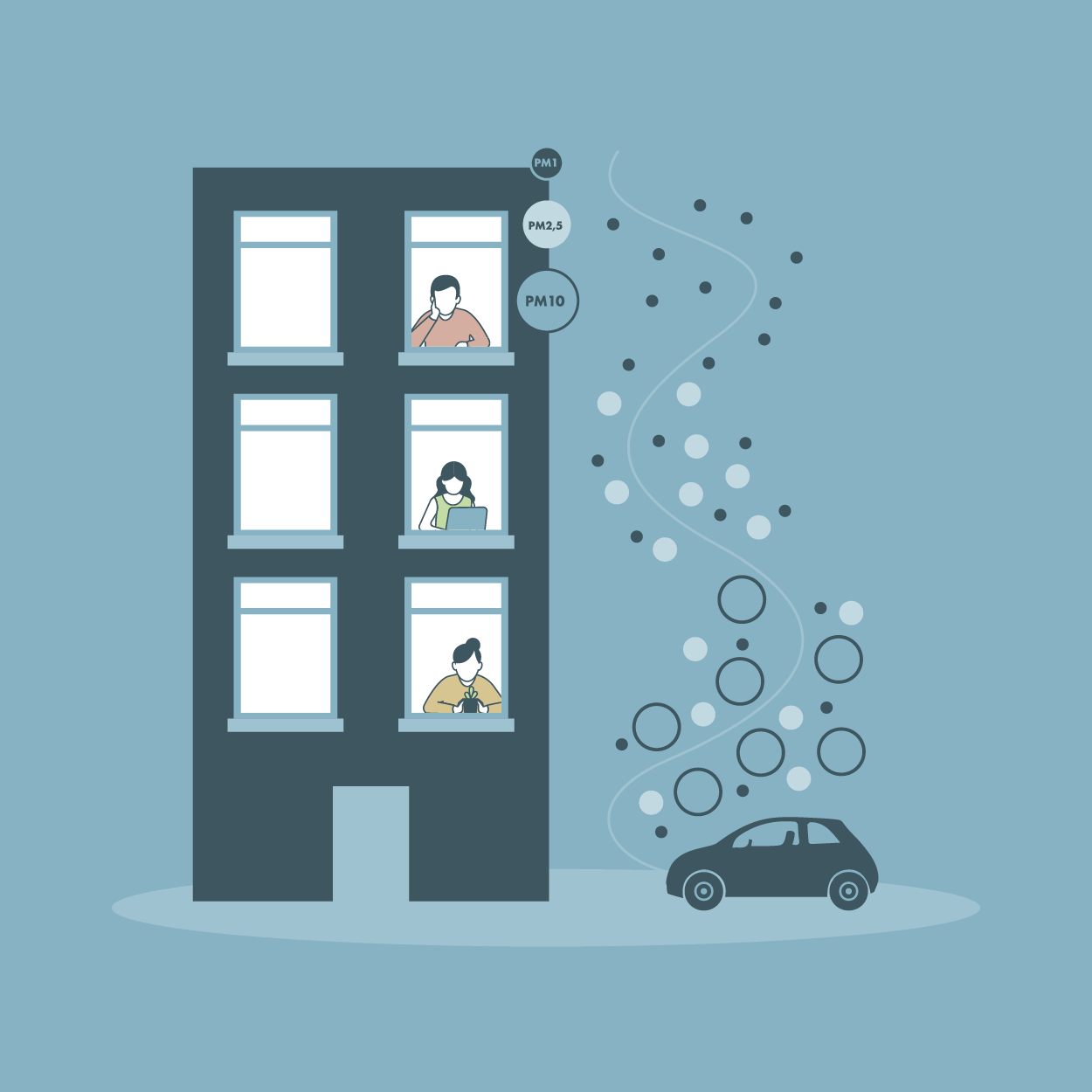
WHY DOES SIZE MATTER?
The smaller the particles, the more dangerous they are.
Smaller particles, such as PM2.5 and PM1.0, can penetrate
into the lungs and even enter the bloodstream, causing
respiratory problems, inflammation and other adverse health effects.
HOW TO TREAT AIRSPRING PARTICLES?
UVC AGAINST BACTERIA AND VIRUSES:
UVC technology effectively destroys microorganisms in the air.
IONIZERS AGAINST PARTICLES:
Ionizers release negative ions that bind particles (PM10, PM2.5, PM1.0), causing them to fall to the ground and making the air safer to breathe. Especially useful in cities with high levels of smog.
ARE THERE TWO WAYS TO MANAGE ODORS INDOOR ENVIRONMENTS?
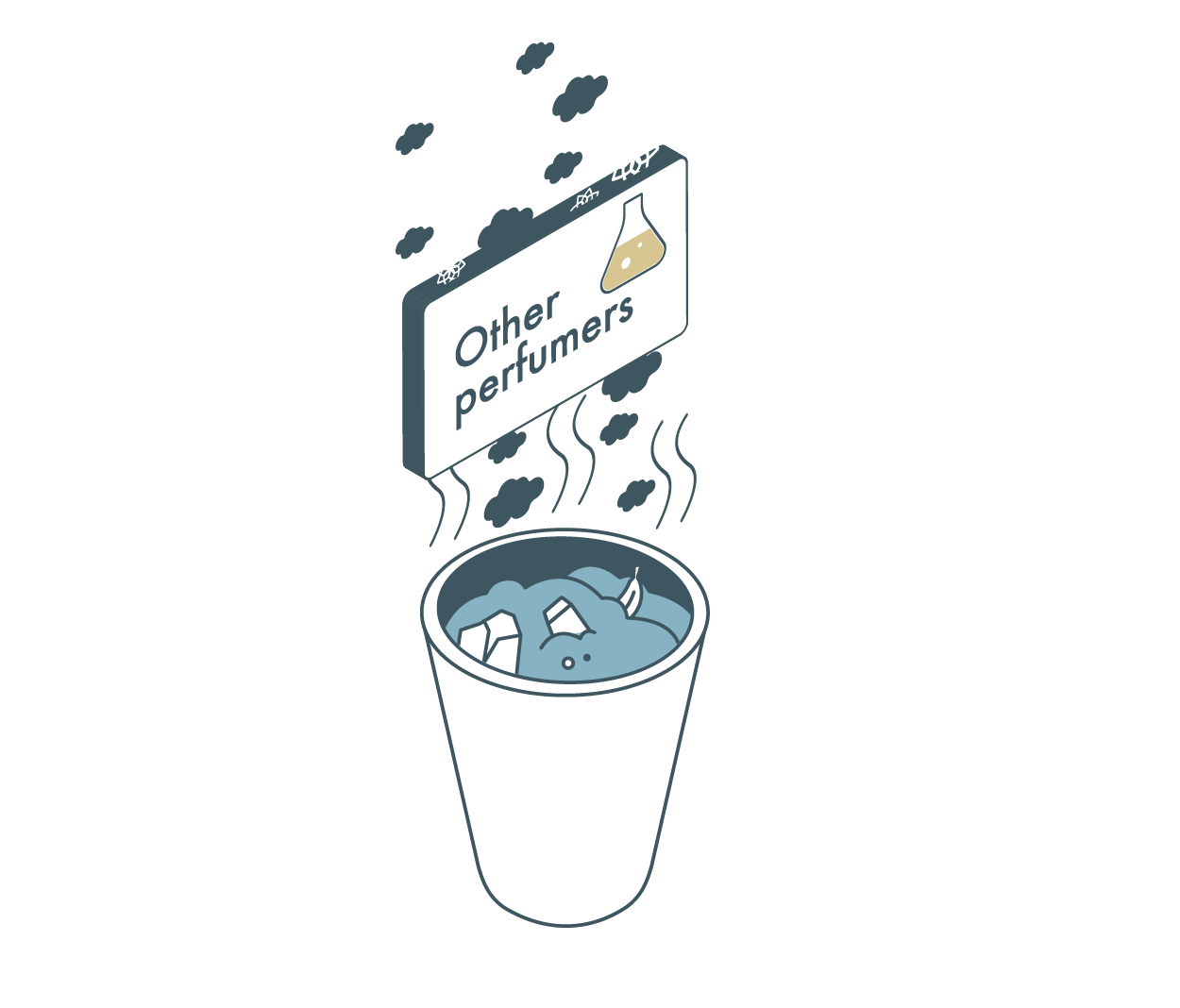
TRADITIONAL AIR FRESHENERS MASKS ODORS
Air fresheners cover odors with synthetic fragrances, but do not eliminate them.
LIMITS
They temporarily mask odors and may contain harmful chemicals or allergens. Many artificial fragrances can worsen air quality. However, it is important to consider not only their effectiveness in masking odors, but also their impact on air quality and the health of people who frequent the treated spaces.
AirCub REMOVES ODORS AND SANITIZES THE AIR
AirCub eliminates odors at the root by emitting a small amount of ozone, well below legal limits, safely sanitizing the air.
COMBINED EFFECT
It can diffuse essences while purifying the air without compromising effectiveness.

TRADITIONAL AIR FRESHENERS MASKS ODORS
Air fresheners cover odors with synthetic fragrances, but do not eliminate them.
LIMITS
They temporarily mask odors and may contain harmful chemicals or allergens. Many artificial fragrances can worsen air quality. However, it is important to consider not only their effectiveness in masking odors, but also their impact on air quality and the health of people who frequent the treated spaces.

AirCub REMOVES ODORS AND SANITIZES THE AIR
AirCub eliminates odors at the root by emitting a small amount of ozone, well below legal limits, safely sanitizing the air.
COMBINED EFFECT
It can diffuse essences while purifying the air without compromising effectiveness.
Heading
Heading
IS THE EFFECTIVENESS OF OUR SANITIZATION SYSTEM 98.8%?
Not all manufacturers measure effectiveness in the same way, but at Puricraft we use a scientific method developed in collaboration with the University of Naples to ensure precise and reliable results.
This approach allows us to evaluate the effectiveness of our system in sanitizing the air from viruses and bacteria, with an effectiveness of 98.8%.
THE PURICRAFT METHOD:
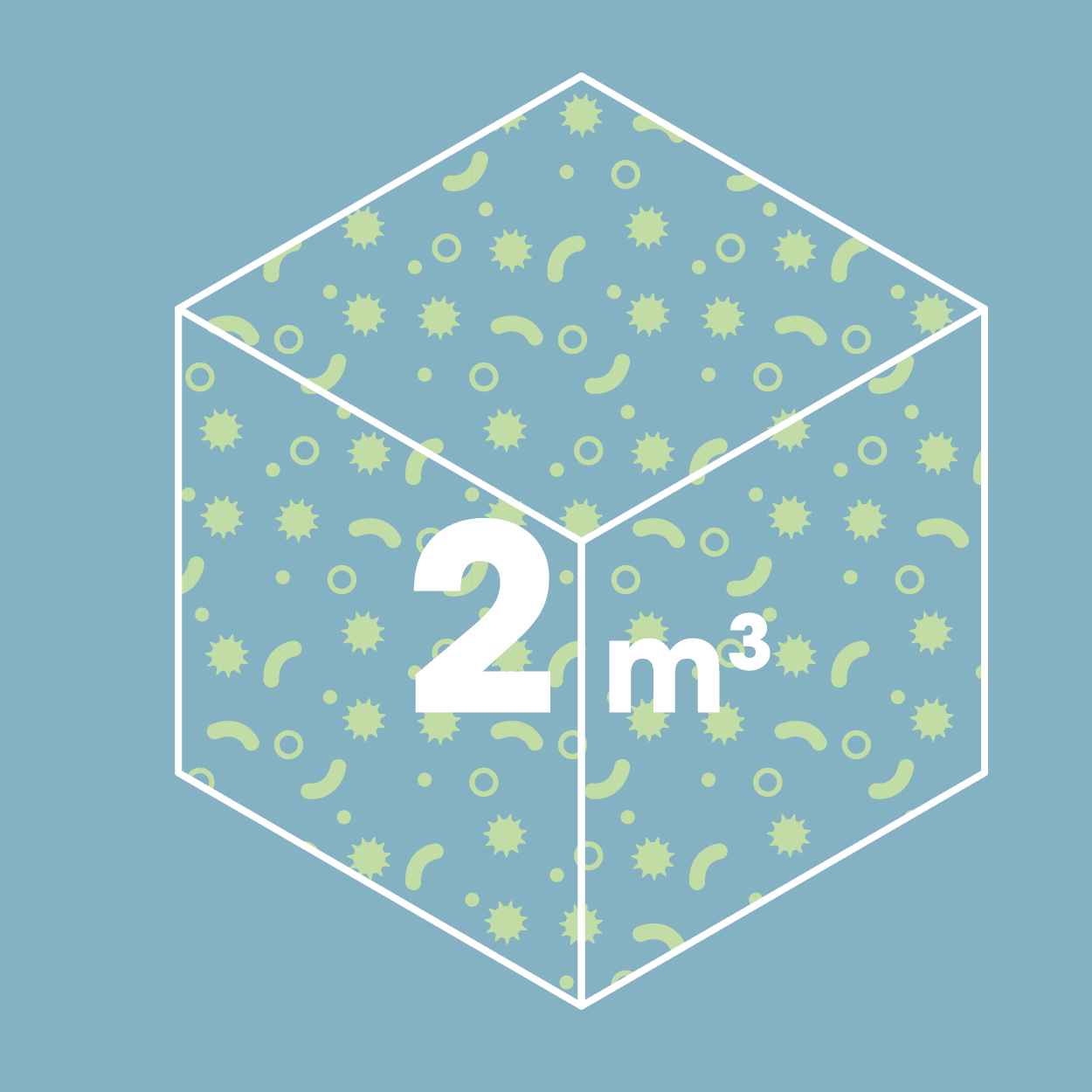
1. INTRODUCTION OF MICROORGANISMS
We introduce a precise quantity of viruses and bacteria into a predetermined volume of air.
Did you know that Puricraft tests are conducted in controlled environments to ensure maximum accuracy?
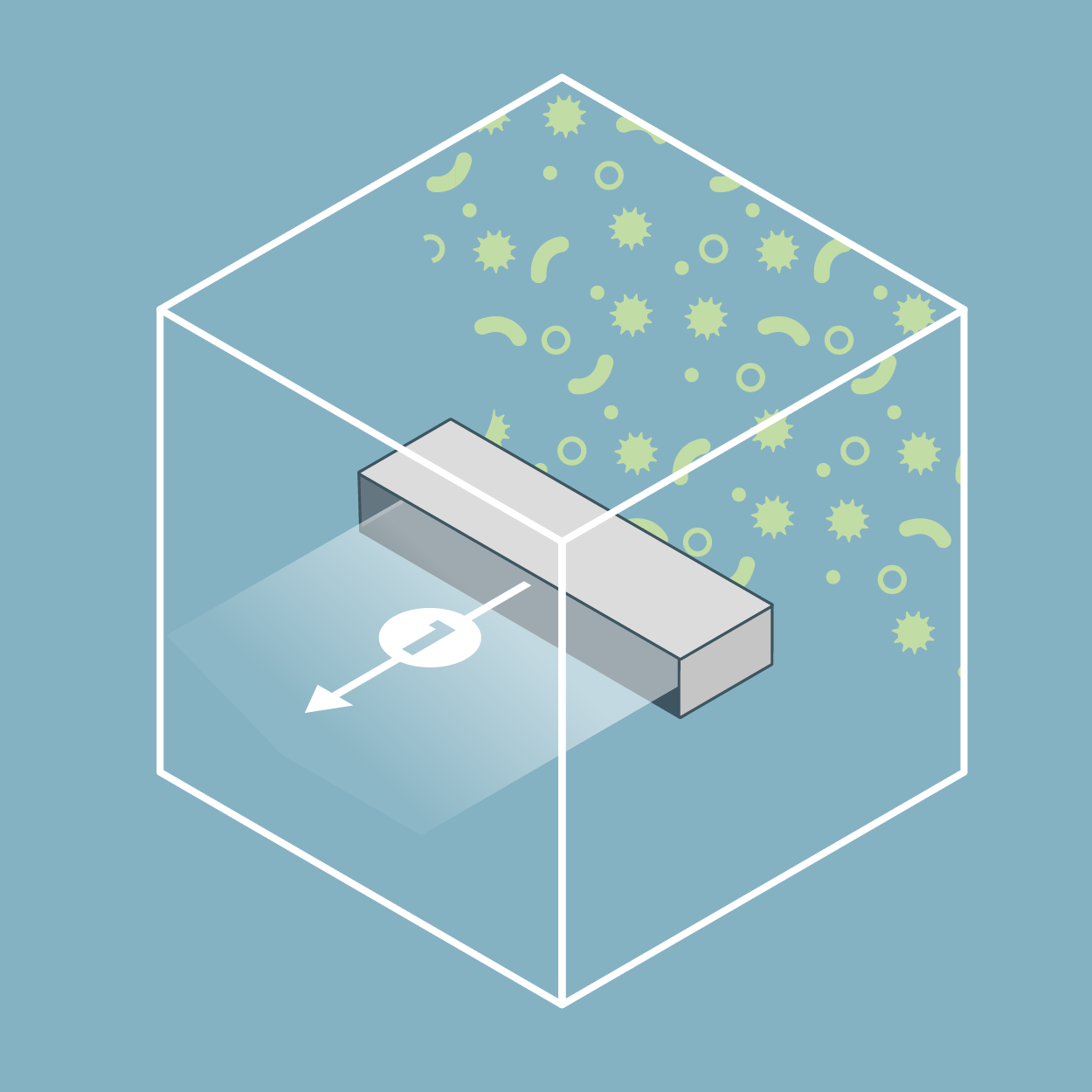
2. PASSING THROUGH THE SANITISER
We pass contaminated air through our sanitization system only once.
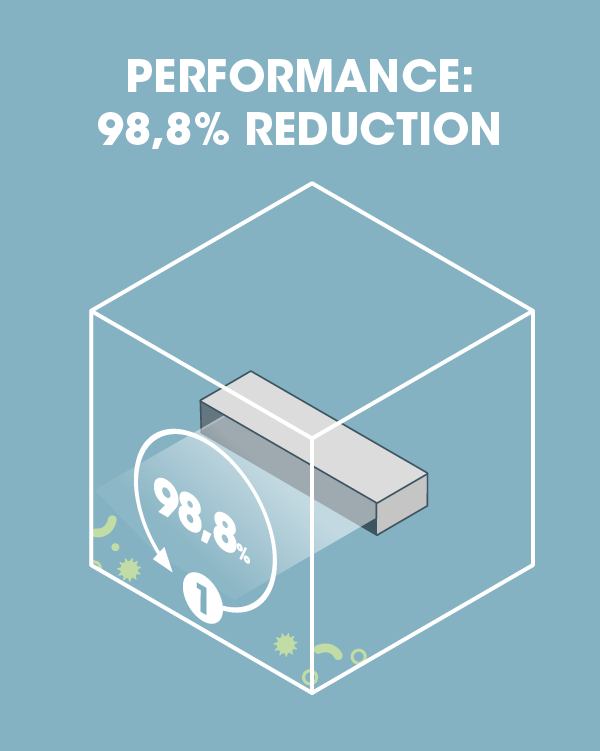
3. POST-TREATMENT MEASUREMENT
After the treatment, we measure how many living microorganisms remain. The result?
Our system eliminates 98.8% of viruses and bacteria in the air.
